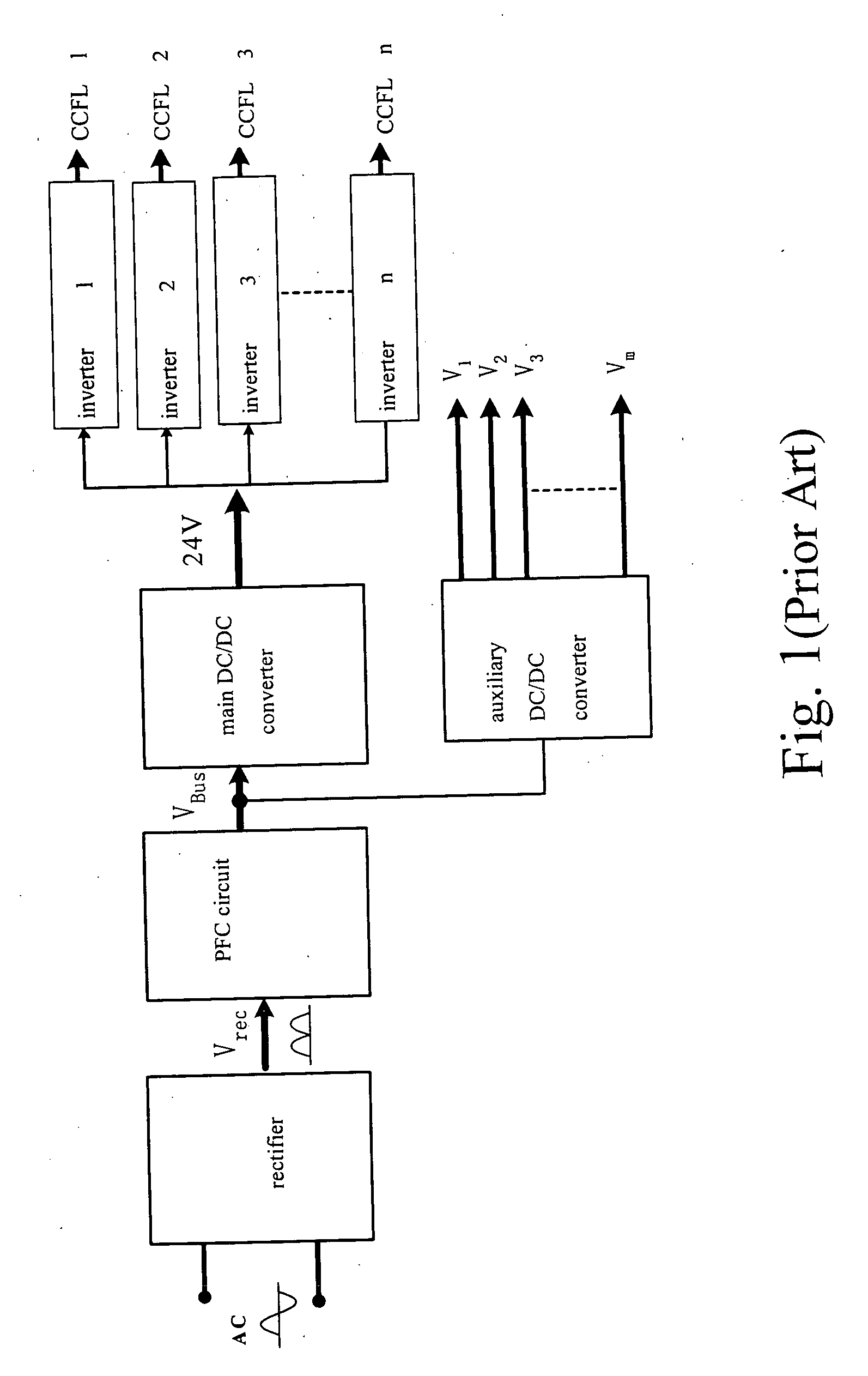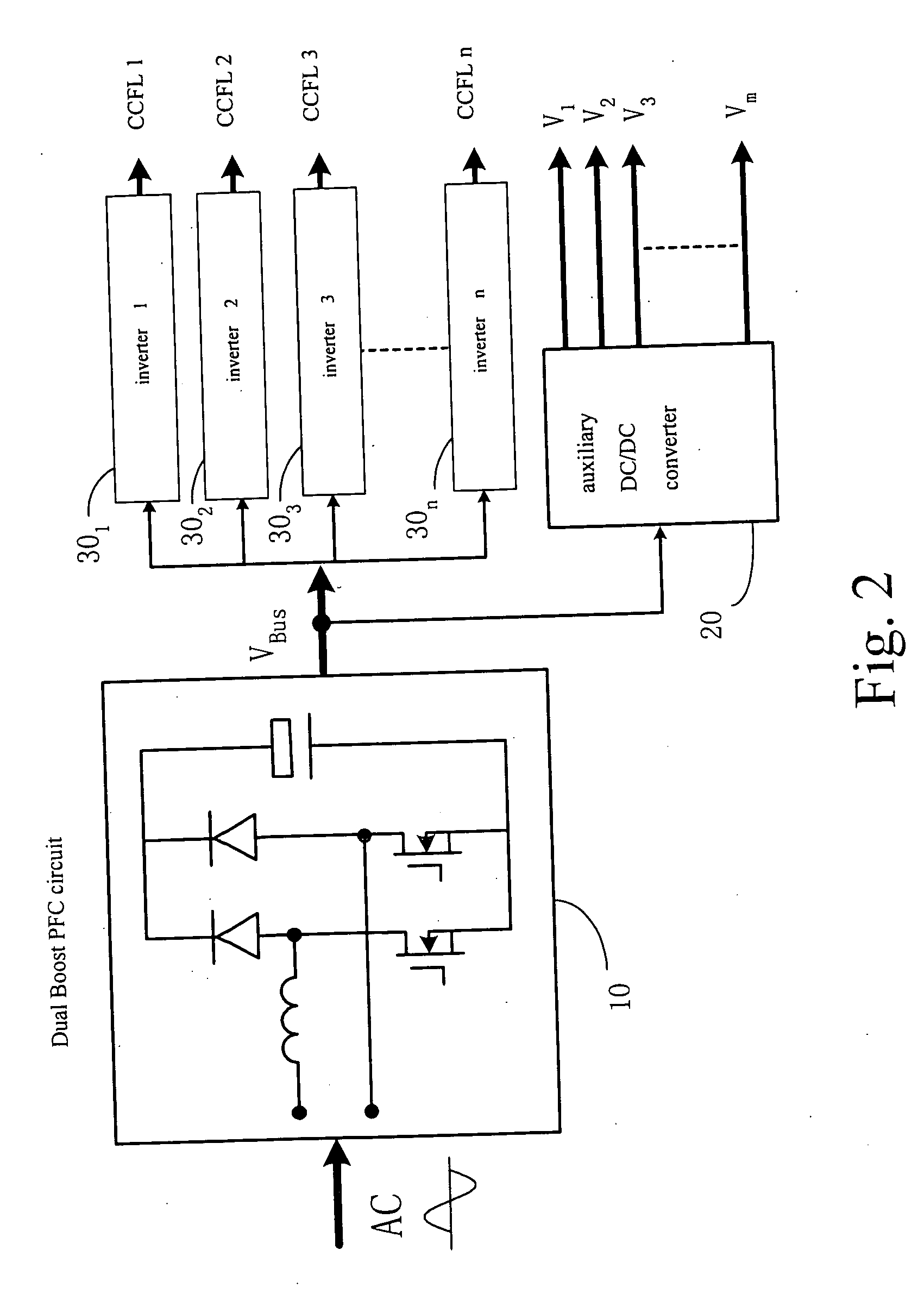Architecture of power supply system for LCD apparatus
- Summary
- Abstract
- Description
- Claims
- Application Information
AI Technical Summary
Benefits of technology
Problems solved by technology
Method used
Image
Examples
Embodiment Construction
[0025] Please refer to FIG. 2, it shows the schematic circuit diagram of the first preferred embodiment of the power supply system architecture of the LCD apparatus of the present invention. In which, the input terminals of a Dual Boost PFC circuit 10 of the front stage are directly connected to the utility AC power network, the input utility AC voltage is converted to a stable DC bus voltage VBUS. A plurality of inverters, 301, 302, . . . , and 30n, for driving corresponding CCFLs, CCFL1, CCFL2, . . . , and CCFLn, to offer the backlight of the LCD panel. The input terminals of these inverters, 301, 302, . . . , and 30n, are electrically connected to the output terminals of the Dual Boost PFC circuit 10, and the input voltage for each of these inverters, 301, 302, . . . , and 30n, is the output voltage of the Dual Boost PFC circuit 10, VBUS. The input terminals of a DC / DC converter 20 are also electrically connected to the output terminals of the Dual Boost PFC circuit 10 for genera...
PUM
 Login to View More
Login to View More Abstract
Description
Claims
Application Information
 Login to View More
Login to View More - R&D
- Intellectual Property
- Life Sciences
- Materials
- Tech Scout
- Unparalleled Data Quality
- Higher Quality Content
- 60% Fewer Hallucinations
Browse by: Latest US Patents, China's latest patents, Technical Efficacy Thesaurus, Application Domain, Technology Topic, Popular Technical Reports.
© 2025 PatSnap. All rights reserved.Legal|Privacy policy|Modern Slavery Act Transparency Statement|Sitemap|About US| Contact US: help@patsnap.com



